There is something magical about Kangra painting. It is not another style of miniature art but a world of devotion and delicate beauty. It is known for its refined beauty and picturesque theme. Originating in the valleys of Himachal Pradesh, this art emerged in the 18th century and quickly became a favourite under the patronage of Rajput rulers. The soft colours, graceful figures and nature rich background is what sets apart the Kangra paintings.
Kangra painting is a beautiful blend of brushwork that blends are and devotion in a perfect harmony. The Kangra School of Painting has refined and lyrical expressions under the broader tradition of Pahari painting. The Pahari styles contributes to the richness offered by Indian miniature paintings, Kangra represents the softness, serenity and deep spiritual expression. It has become a cultural treasure which reflects on the regional identity and spiritual thought. Today, Kangra painting is a symbol of India’s artistic heritage.
Source: Wikipedia

Origin
With the Mughal rule crumbling in the 17th and 18th century, many artists left Delhi and ended up in places like Guler and Kangra. They had brought the techniques of Mughal miniature painting with them, and over the period of time they combined this with the local elements bringing in the artform of Kangra painting. Maharaja Sansar Chand Katoch played a significant role in helping this artform and many call it the ‘golden age’ for Kangra paintings. Under his patronage the Kangra painters flourished and stood out from other Pahari styles like Basholi and Chamba. The main centers for this painting were Guler, Bilaspur, Kangra and Nupur. Nainsukh, Manaku were few of the artists that led this style of painting and laid the foundations for the aesthetics of Kangra school of painting.
Flourished in Royal Courts
With the royal patronage, Kangra painting was able to spread beyond the Kangra valley. The ‘chitrashalas’ were setup and artists worked on their art. Another important feature was the Bhakti movement that had taken its root in North India. This spiritual wave matched with the aesthetics in Kangra paintings. Artists began illustrating scenes from Jayadeva’s Gita Govinda, Rasikapriya and Bhagvata Purana. They not only paint the scenes but the emotions. One could see the mood of the landscape, Krishna’s charm and Radha’s longing.
What stands out in Kangra painting is the softness and naturalism. Unlike the geometrical patterns and bold colours of earlier Pahari style, Kangra focused on expressions and making the scenes lifelike. Nature was painted to set the scene and reflect on the mood of the characters. Even with the fall of Kangra kingdom and the colonialism, the artwork managed to survive. The efforts of art historians, museums and local artists have kept the spirit alive.
Source: cottage9.com
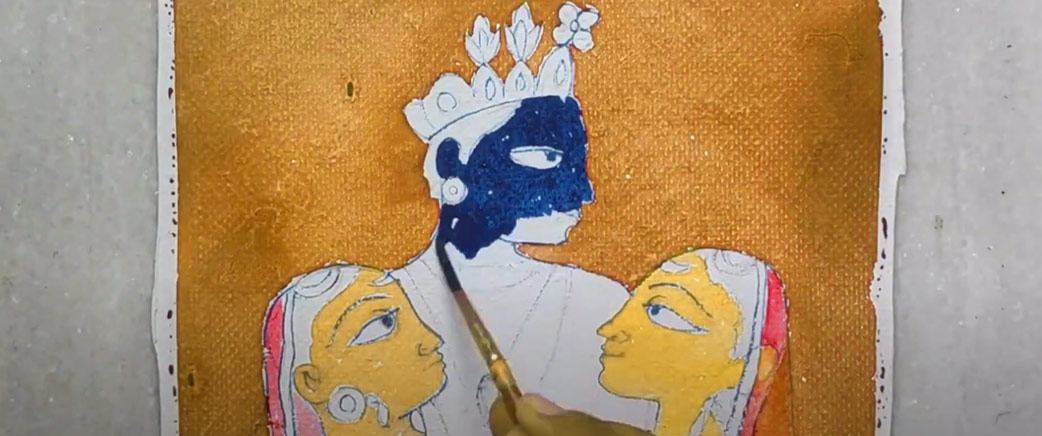
Process
1 Preparing the Canvas: traditionally handmade papers called as ‘wasli’ treated with starch is used
2 Sketching: the initial sketching is done using charcoal and the composition of characters and background is planned
3 Outline: this is done using a fine brush and defined using black or brown ink
4 Colour: the colours used are naturally derived from plants, flowers, minerals and are then mixed with gum Arabic for durability and shine
5 Detailing: there is emphasis on expressions and gestures to refine the elements of the painting.
Motifs
The garments as well as the ornaments are detailed, featuring paisleys, floral vines and embroidery patterns. The jewellery – crown, necklaces and anklets highlight the intricateness. The figures also have expressive details which allows for a richer storytelling and connecting the viewers to those scenes.
Radha and Krishna – At the heart of Kangra painting is the divine story of Radha and Krishna. Their stories of sharing glances in the forest or sharing a quite moment under the stars, it is potrayed with tenderness.
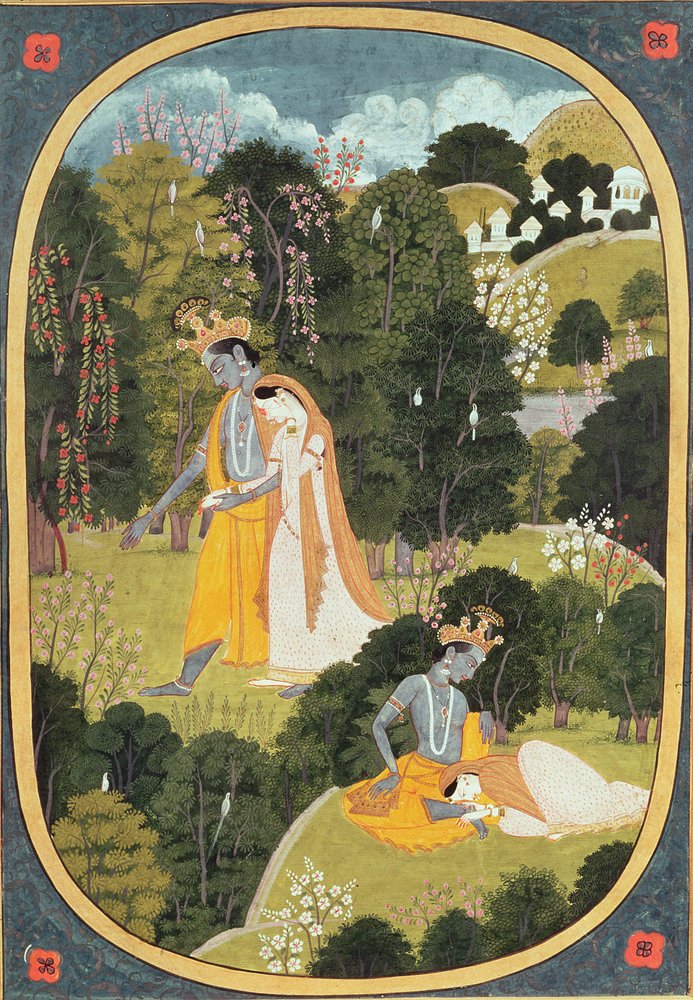 Source: meisterdrucke.uk
Source: meisterdrucke.uk
Nature – Nature in the paintings is not just decorate the place but reflects the mood of the character. Blooming trees, meadows, rivers and flowers can be seen in these paintings.
 Source : Caleidscope.in
Source : Caleidscope.in
Feminine Grace – Female figures are painted with grace. They are shown with almond eyes, flowing garments to show both beauty and the inner emotion.
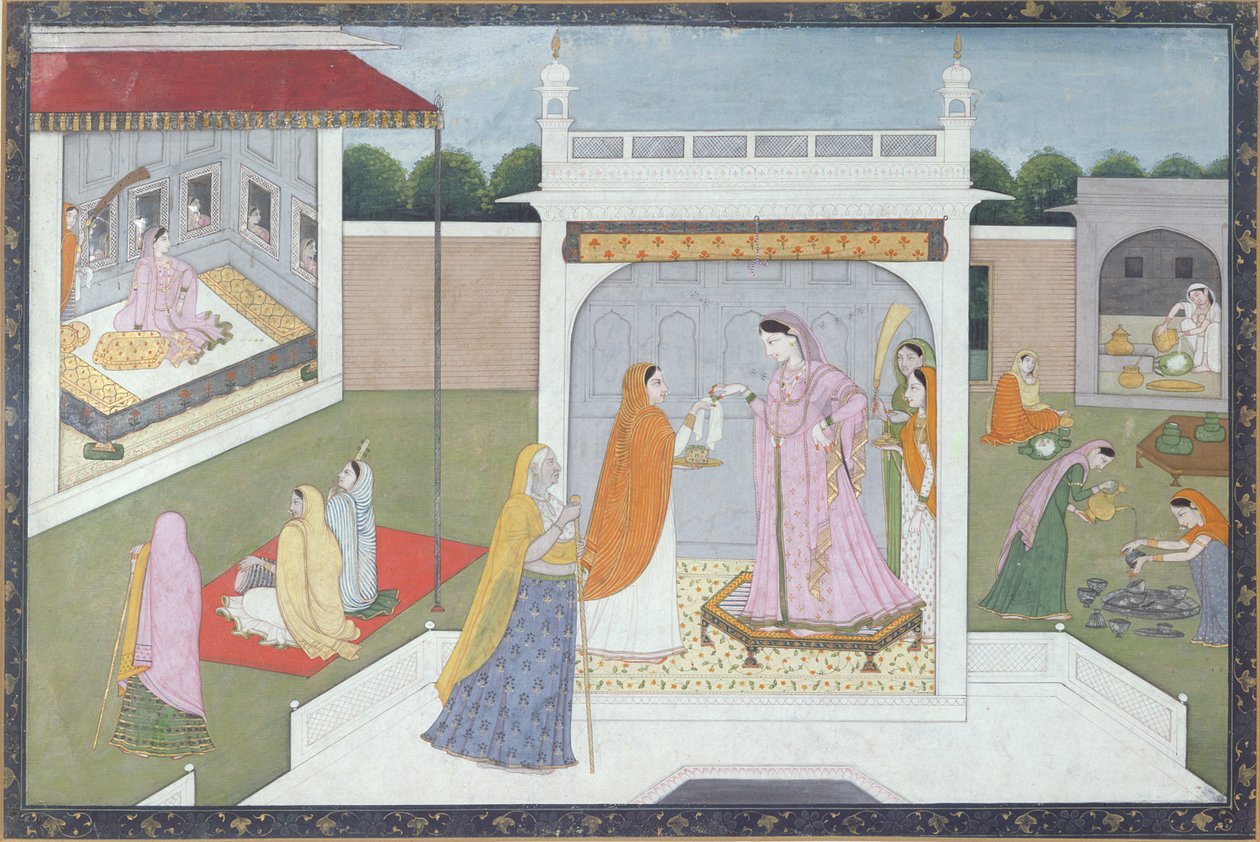 Source: meisterdrucke.ie
Source: meisterdrucke.ie
Architecture – There are domes, balconies and temple courtyards seen in the composition of Kangra paintings. This royal setting gives dept and perspective to the composition.
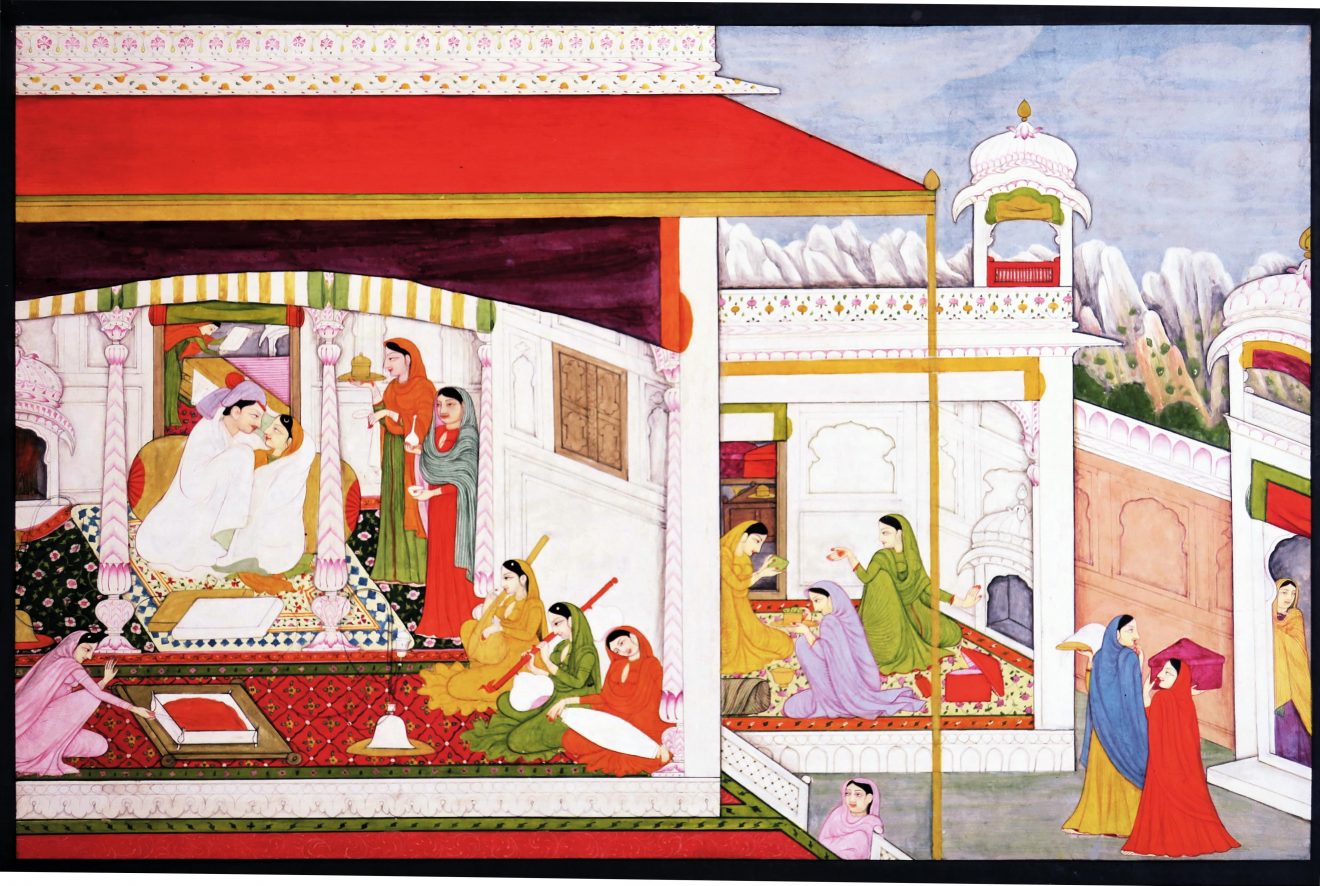 Source: thedispatch.in
Source: thedispatch.in
Animals and Birds – Birds such as peacock, parrots and swans are the recurring motifs seen in these paintings. Animals like deer, cow and sometimes elephants showing the divine with pastoral life.
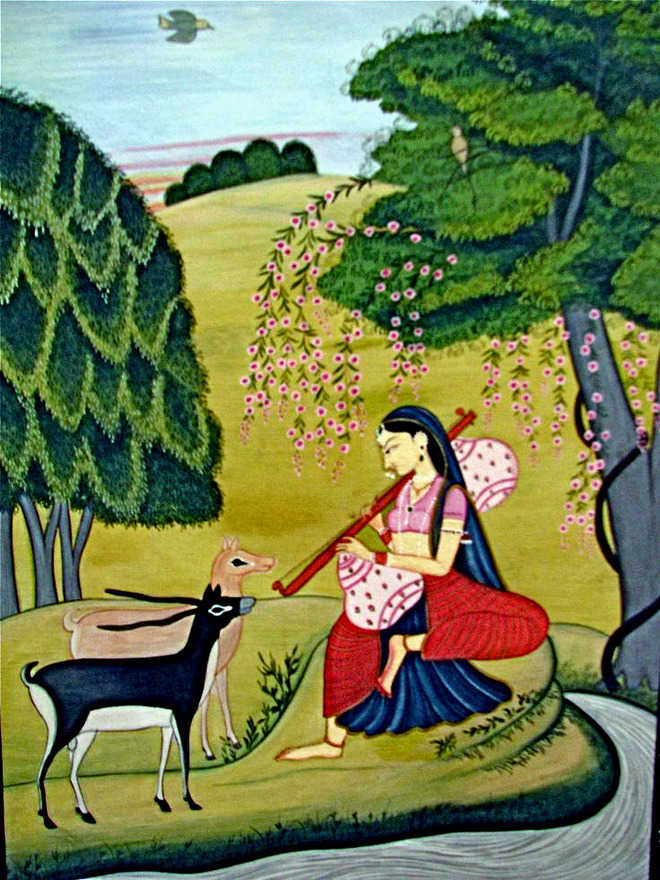 Source: tribuneindia.com
Source: tribuneindia.com
Future of the painting
The once thriving art under the patronage of the royals, now lies between preservation and reinvention. The number of traditional artists has declined over the period of time, but the art has managed to witness a slow revival thanks to cultural organization, museums working to preserve and promote this artwork. It is important for institutions like these to help revive and generate aware among people regarding the art. Government bodies can initiate programs which will help train artists in training with the techniques used in Kangra painting. Moreover collaborating with museums and art galleries can help with platforms such as exhibitions and cultural exchanges to bring this artwork closer to the people. This will then promote the painting which would help in exposure and financial benefits of the artisans. Bring in cooperatives would help the artists come together, share resources and support one another.
Contemporary artists have begun to reinterpret the Kangra painting into the modern formats of illustrations and textiles. For this revival to be successful there need to be institutional support and awareness to help the continuity. With a balance of heritage and innovation Kangra painting can continue to grow and inspire generations with beauty and spiritual depth.
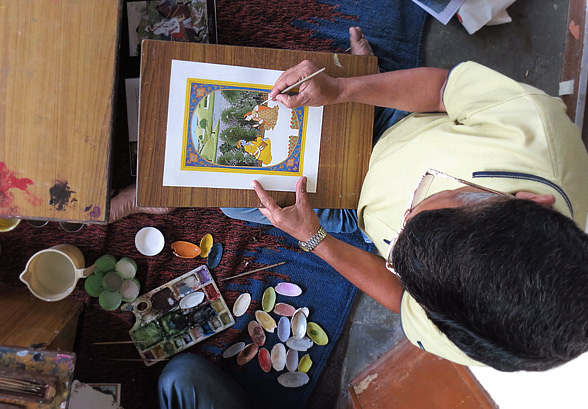 Conclusion
Conclusion
Each brushstroke tells a story of not just Radha and Krishna but of a culture which values devotion and harmony with nature. It is marked by fluid brushwork, soft colours and emotive storytelling. Today the art work of painting is in need for preservation and engagement. There are efforts from local artists, art institutions to keep this tradition alive. It received the Geographical Indication (GI) status in 2012, recognizing the need for preservation and its cultural importance. Additionally, institutions like National Museum, Delhi curate exhibition showcasing the art.
As we look at Kangra painting today, it reminds us of the connection between the human and the divine, the present and the past. These paintings invites us to pause and reconnect with the contemplative view of life. The colours, the figures and the landscape pull you in, understanding their story.
Source: gaatha.com
References
https://www.cottage9.com/art-technique/the-art-of-making-kangra-paintings/
Brushstrokes of Heritage: Navigating the Enchanting World of Kangra Paintings
Kangra Paintings: Discovering the Rich Artistic Heritage of India
https://blogs.joktacademy.com/2023/09/kangra-painting-timeless-artistic-legacy.html
https://hpkangra.nic.in/gallery/kangra-paintings/#:~:text=The%20recurring%20theme%20of%20Kangra,into%20theircharacter%2C%20likes%20and%20attributes.




